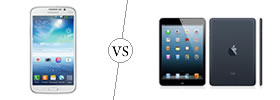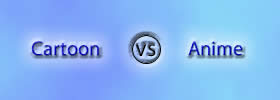Difference between TIFF and PNG
Key difference: Both TIFF and PNG are raster file formats, essentially a bitmap image. TIF and TIFF are filename extensions used for the Tagged Image File Format. PNG stands for Portable Network Graphics. It was created as an improved and non-patented replacement for Graphics Interchange Format (GIF).
 There are many different file formats available. Obviously, some are better used for some certain effects or reasons. But which is used for which? TIFF and PNG are two such formats. As they are both image formats, they do have certain similarities. However, they do differ in the manner that they are stored and are used.
There are many different file formats available. Obviously, some are better used for some certain effects or reasons. But which is used for which? TIFF and PNG are two such formats. As they are both image formats, they do have certain similarities. However, they do differ in the manner that they are stored and are used.
Both TIFF and PNG are raster file formats, essentially a bitmap image. The term bitmap essentially means a map of bits or specifically a ‘spatially mapped array of bits’. The term bitmap is rooted in computer programming terminology. A bitmap images uses different colored pixels, which are arranged in a manner to display an image. Examples of bitmap images include .png, .psd, .jpg, .gif, .tif, or .bmp.
TIF and TIFF are filename extensions used for the Tagged Image File Format. The Tagged Image File Format is a file format for storing images. It is popular among graphic artists, the publishing industry, and among both amateur and professional photographers. The Tagged Image File Format is currently under the control of Adobe Systems.
The Tagged Image File Format is widely supported by image-manipulation applications, by publishing and page layout applications, 3-D imaging applications, and by scanning, faxing, word processing, optical character recognition and other applications. It is a bitmapped image format that supports various resolutions.
TIFF is a lossless data compression; it stores the image file with virtually no compression. This means that all the data on the image is stored when the image is compressed, i.e. there is no change in resolution. The TIFF format allows the editing and resaving of the image without suffering a compression loss. Hence it is often used for storing images that need to be edited and re-saved.
TIFF files can have a bit depth of either 16-bits per channel or 8-bits per channel. Also, multiple layered images can be stored in a single TIFF file. The Tagged Image File Format is widely supported by image-manipulation applications, by publishing and page layout applications, 3-D imaging applications, and by scanning, faxing, word processing, optical character recognition and other applications. It is a bitmapped image format that supports various resolutions. The Tagged Image File Format is used to store very large, high quality images, with files being as large as 4GB each.

PNG stands for Portable Network Graphics. It was created as an improved and non-patented replacement for Graphics Interchange Format (GIF). The PNG file format was published as an ISO/IEC standard in 2004. Hence, it is a generally and widely accepted format. A PNG file uses a file extension of .png or .PNG.
The PNG format was designed specifically for transferring images on the Internet. PNG supports palette-based images of 24-bit RGB or 32-bit RGBA colors, grayscale images, and full-color non-palette-based RGB images. It does not however support non-RGB color spaces such as CMYK. Hence it cannot be effectively used for professional-quality print graphics.
Unlike some other file formats, such as JPEG, PNG is a lossless data compression. This means that all the data on the image is stored when the image is compressed, i.e. there is no change in resolution. However, this also means that a same image will end up taking more data space as a PNG file than say a JPEG image. The PNG file would still take up less space than a PSD file, as a PSD contains more data as compared to a PNG file.
Furthermore, PNG supports image transparency, whereas many other types of formats do not. Transparency in image allows an image to be moved or copied onto any other background image.
Image Courtesy: veryicon.com, iconarchive.com









Add new comment